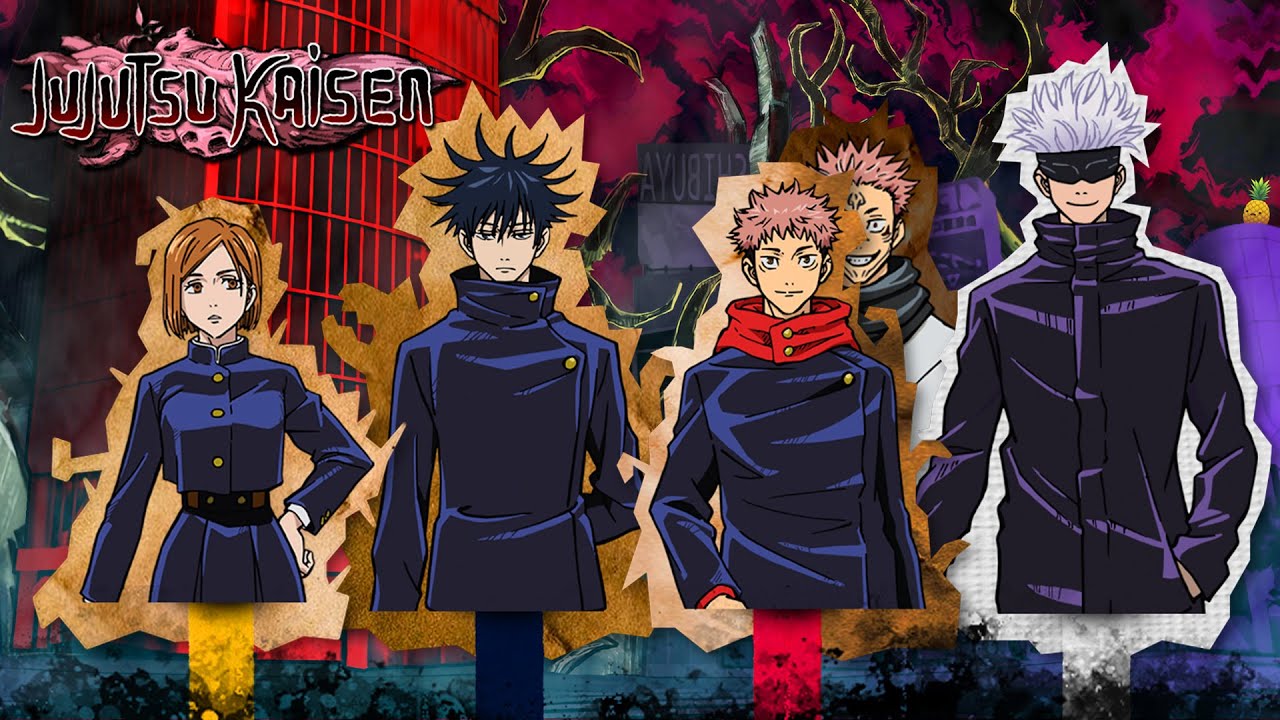John’s Additional Picks for 2020’s Best TV Anime
I’ve observed Keep Your Hands Off Eizouken!, Smile Down the Runway, Akudama Drive, Moriarty the Patriot, and Somali and the Forest Spirit as the best new anime series premieres of 2020, but recognizing just five titles doesn’t do justice to all of the unique, creative, and interesting new titles that debuted in 2020. Several titles barely fell short of my best of year picks.
Supernatural shounen action anime fans have been amply rewarded in back-to-back years with the premieres of Kimetsu no Yaiba in 2019 and Jujutsu Kaisen in 2020. Especially in light of its hyperkinetic first episode, Jujutsu Kaisen feels like a hybrid of Bleach and Battle Royal High School. The show utilizes the trope of the high school setting and highly idiosyncratic adolescent exorcists, a setting borrowed from anime including Bleach, Sousei no Onmyouji, Yakusai Kocho, Karula Mau, Onikirimaru, Gensei Shugoshin Pi-hyoro Ikka, and Kujaku-Oh, combined with the Grand Guignol grotesque monster design and explicit gore reminiscent of 1987’s Battle Royal High School OVA. Somewhat comparable to Ushio to Tora, Jujutsu Kaisen has a prominent, palpable horror atmosphere offset by slapstick comedy. But Jujutsu Kaisen simply feels more contemporary and slightly less beholden to obligatory tropes than Ushio to Tora. Particularly exhibited in episodes 5, 7, and 12, the animation quality from MAPPA is often exceptional. But with only 13 episodes in its initial broadcast, Jujutsu Kaisen feels as if it’s only just getting started. As far in as episode 12 the show is still introducing prominent new characters. None of its initially introduced plot points are resolved. The show is excellent in components or when considered as individual scenes. But as a linear story there’s not much to it yet. So giving the show excess credit this early feels premature.
Assault Lily: Bouquet and Princess Connect! Re:Dive are both bishoujo magical action shows that outwardly seem to warrant summary dismissal. Assault Lily seems redundant following franchises including Madoka Magica, Yuki Yuuna, Symphogear, and Vividred Operation. Princess Connect is one of countless fantasy RPG adaptations. Assault Lily: Bouquet benefits from the creative touch of animation studio Shaft. The series’ story may be minimal, but its production design is lush and lovely, and its animation quality is silky smooth. Effectively, the story is undercooked, but many other aspects of the production are stellar. Similarly, Princess Connect is absolute disposable fluff. Specifically, in the vein of KonoSuba and DanMachi, Princess Connect is a lighthearted and silly parody intended as nothing more than an amusing distraction. But the show’s color design and animation quality are among the finest of the year. Although not highly original looking, the show is gorgeous looking, and its fluidly and elaborately animated action scenes are exceptional.
If My Favorite Pop Idol Made It to the Budokan, I Would Die (Oshi ga Budoukan Ittekuretara Shinu) is unique in several respects. Shows about pop idols are common, but shows about idol otaku are far less common. Moreover, a show starring a young adult woman who is also an idol otaku makes this series especially unusual. A kneejerk American perception may stereotype protagonist Eripiyo as a stalker, but that classification isn’t correct. The show illustrates the practically autistic Japanese status of the “supporter,” an obsessive fan that doesn’t idealize an intimate personal relationship with the celebrity but rather obsessive popularization of the celebrity. While a stalker wants to monopolize a celebrity, the supporter instead wants everyone to recognize and appreciate the celebrity. So “Oshi ga Budoukan” is a sympathetic comedy of errors revolving around a compulsive young woman who really does mean well, who doesn’t have malicious or harmful desires. Yet her overwhelming compulsion drives her to near madness and makes her comically pitiful. The show is commendable for presenting a deep, focused examination of an under-represented aspect of Japanese social culture, without criticizing. The show simply presents Eripiyo’s haphazard lifestyle and allows viewers to decide if Eripiyo is creepy, hilarious, or pitiful.
Hiroaki Samura’s Wave, Listen to me! (Nami yo Kiite Kure) is tonally and stylistically as far removed from his signature creation, Blade of the Immortal, as possibly can be. Furthermore, Nami yo Kiite Kure is stylistically far removed from virtually all other anime. The show feels most like an anime directed by Jason Reitman (Juno, Up in the Air). The series refreshingly stars adult characters who have matured beyond shame and hesitation to speak their minds. However, they communicate much like real-life Japanese people do, in fragmented sentences and incomplete expressions that assume the listener already knows the topic of discussion. The story is set in Sapporo, relatively far from the Tokyo setting of most anime. So the story emphasizes that protagonist Minare Koda represents the typical Hokkaido young adult woman rather than the typical Kanto woman. The series feels a bit like it’s inflicted with ADD as if flits from scenario and location non-stop, illustrating the multi-faceted constant demands on Minare’s attention and efforts. The series isn’t fulfilling or satisfying so much as it is fascinating, allowing viewers a peek into an entirely different window of anime and Japanese culture.
Tatami the House Spirit (Zashiki Warashi no Tatami-chan) is another delightfully incisive satire of Japanese culture. What makes this series of short Flash cartoons so appealing is precisely how ruthlessly observant the satire is. The show satirizes the loneliness, desperation, and sheer cattiness of modern Japanese culture by tearing away the veneer of politeness and euphemism, literally calling a spade a spade.
Like the Jurassic era, the heyday of the kogal has passed, but elements of “gal” culture still persist in contemporary Japan. Gal and Dinosaur (Gal to Kyoryu) doesn’t aim to satirize fleeter gal culture nor even catalog and disseminate it. The intention of the show is to remind viewers that gals are people too, that they’re not the stereotypical ditzy, air-headed, superficial vixens they’re imagined to be. Protagonist Kaede may be carefree, but that personality also makes her considerate, kind, and friendly. Moreover, the show itself is an interesting showcase of formats and styles representing mainstream Japanese taste in entertainment. The show incorporates traditional 2D animation, 3D CG, stop-motion, Flash animation, puppetry, and live-action, and the series’ variety format covers virtually every genre imaginable, from tokusatsu hero parody to magic adventure to romance to Japanese stand-up comedy to slice of life drama. The show isn’t made or nor targeted at typical anime otaku, and that completely different orientation is what makes the show such an interesting alternative to conventional anime.
Deca-Dence would be one of the year’s finest original anime if only it was completely original. The briskly paced and energetic sci-fi action anime can be fun for die-hard otaku as a sort of “spot the reference” game. Deca-Dence is such a mishmash of influences and concepts from prior anime that otaku can literally pick out parallels to Suisei no Gargantia, Overman King Gainer, Shingeki no Kyojin, Kaze no Tani no Nausicaa, Kaiba, and Char’s Counterattack, to name a few. However, the show also manages to incorporate some effective narrative surprises and plenty of exciting, fluidly animated action scenes. So long as viewer expectations aren’t too high, Deca-Dence can easily meet, if not exceed, those expectations.










